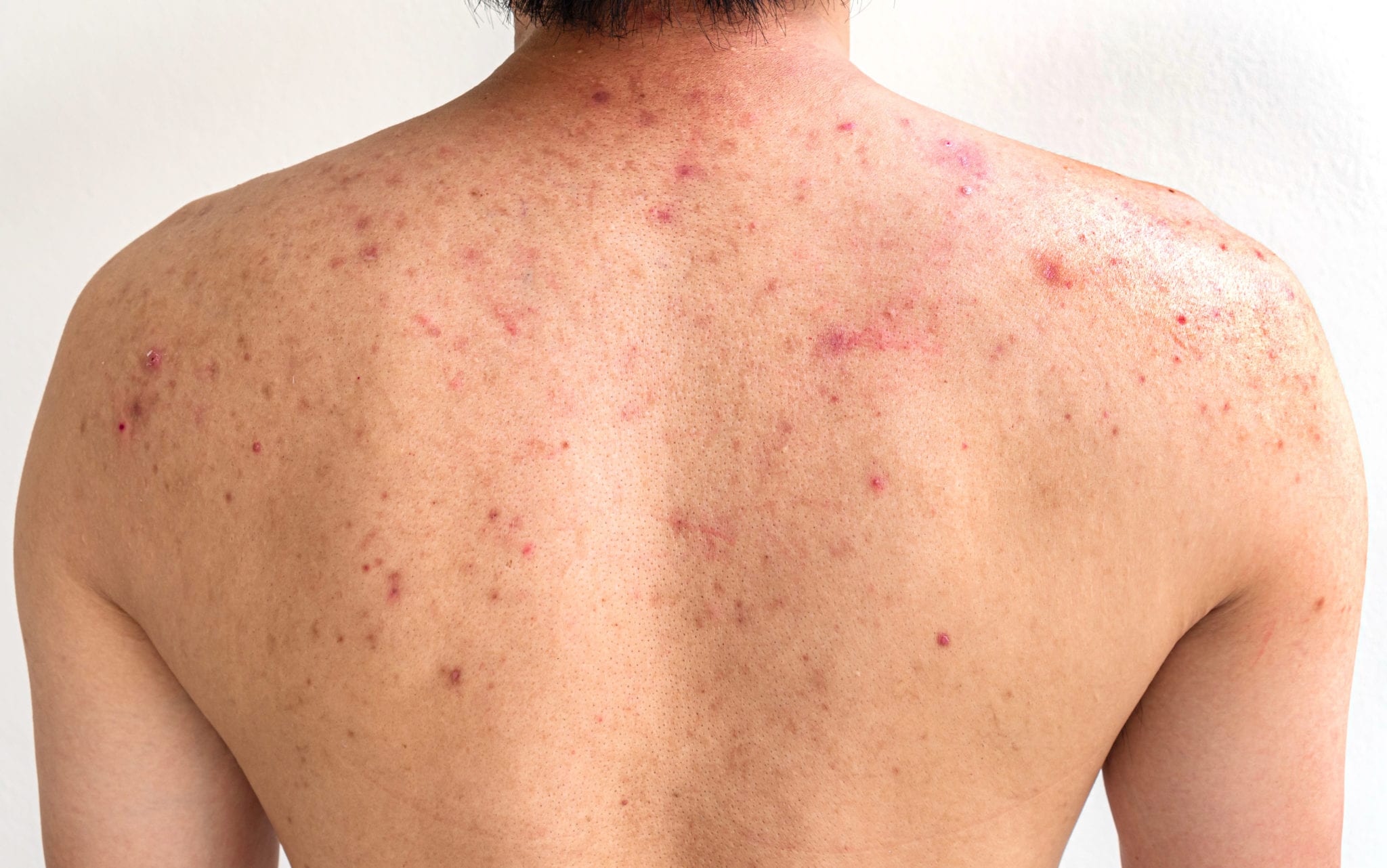 Back acne, also known as “bacne”, can be annoying and, at times, painful. If you are experiencing back break-outs, you are not alone. Back acne is a common problem among teenagers and adults alike. Luckily, there are ways to treat this pesky problem.
Back acne, also known as “bacne”, can be annoying and, at times, painful. If you are experiencing back break-outs, you are not alone. Back acne is a common problem among teenagers and adults alike. Luckily, there are ways to treat this pesky problem.
1. Exfoliate regularly
“Exfoliating is one good way to prevent back acne,” shares Dr. Jennifer Vickers, a board-certified dermatologist at Sanova Dermatology – Bee Cave & Lakeway. Similar to the skin on the face, the skin on the back has many sebaceous (oil) glands, and it produces a fair amount of natural oil, contributing to the development of back acne. “When you exfoliate regularly, you lessen the number of dead skin cells that can accumulate on the surface of the skin, thereby reducing the amount of oil trapped under the skin and clogging the pores,” Dr. Vickers explains. It is important to note that too much or too vigorous exfoliation can actually irritate the skin and worsen your acne. A light exfoliating wash used several times weekly is sufficient.
2. Over-the-counter washes and gels
Over-the-counter washes that contain benzoyl peroxide help to kill bacteria that contributes to acne. By washing regularly with these types of washes, you can control your acne and reduce flares. “Because the skin on the back is rather thick, benzoyl peroxide washes work best if they are allowed to sit on the skin for a few minutes before thoroughly washing off the soap with water,” Dr. Vickers states. “Using an OTC retinoid gel, such as Differin, can help unclog pores and clear back acne, as well as help the benzoyl peroxide wash work even more efficiently,” she continues. Using products that are oil-free is essential. Look for packaging that states the product is non-comedogenic, “won’t clog pores,” or oil-free.
3. Improve your hygiene
Consistently using good hygiene habits can help prevent back acne. “If you work out, be sure to shower quickly and change your clothes after you have been sweating,” Dr. Vickers suggests. If you can’t shower immediately, wipe off with a gentle cleansing wipe. Wearing loose-fitting and moisture-wicking fabrics can be helpful, as well as washing your workout gear after every use. Make sure to regularly and thoroughly wash your towels, pillowcases, and sheets weekly to biweekly, and avoid habits that create friction on the skin of your back. “Most importantly, do not pick!” encourages Dr. Vickers. “Picking will lead to further inflammation and scarring!”
4. Chemical peels and “Bacials”
Go ahead and pamper your back like you would pamper your face. Having a light chemical peel with alpha and beta-hydroxy acids (such as glycolic, lactic, or salicylic acid), can help slough dead skin cells and unclog pores. Be sure to apply a non-comedogenic sunscreen after having a peel as your skin will be sensitive to the sun. A “bacial” (or back facial) can cleanse and soothe the skin, and clogged pores/comedones can be extracted. Added bonus: Scheduling a treatment with your dermatologist or aesthetician means treating those hard-to-reach places on the back with a relaxing procedure. Treat yourself!
5. Develop good health habits
While changing your dietary habits may not completely clear your back acne, avoiding pro-inflammatory foods (such as sugar and refined carbs) and consuming anti-inflammatory foods (such as fish and vegetables) may help reduce acne breakouts and inflammation in the skin. Supplements with whey, such as whey protein shakes and bars, have been linked to worsening acne. Consider switching to plant-based protein instead. And it is important to note that testosterone supplements and other hormonal supplements can create, exacerbate, and perpetuate acne, particularly on the back. Continuing with these supplements may make it quite difficult to clear your back acne and may lead to deep acne cysts that create permanent scarring on your skin.
Unsure how to treat your back? Invest in a lotion applicator for the back and be sure to clean it regularly. Alternatively, schedule treatments such as chemical peels and bacials that can be applied by your dermatologist or aesthetician.
Contact Us
If you have tried treatments like those mentioned above but your acne does not improve or even progresses, see a board-certified dermatologist for further recommendations and care.
